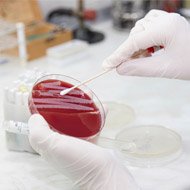Vet school research fostering One Health

"It is essential that our links with European organisations remain strong."
World-class research carried out in UK veterinary schools is fostering links between human and animal medicine, having a real impact on society across Europe and beyond. This is according to a new report published by the Veterinary Schools Council.
Chief veterinary officer Nigel Gibbens writes in the foreword: 'We have long understood the value of improving animal wellbeing as an end in itself, whether to companion animals or livestock.
'But increasingly we learn that our relationship with them is more complex then the moral obligation we feel today or the working relationship we have had for millennia. Their importance to humans extends to the fundamentals of our physical and even mental health - just as we, and our behaviour, are so important to them. At the centre of all this is veterinary research.'
Case studies included in the report - Bridging the gap: Linking animal and human medicine thorough veterinary school research and One Health - are divided into three areas. The first focuses on food security, including the research being carried out to breed out resistance to certain infections in salmon, and new methods of bovine TB testing which have reshaped government thinking. As the global population increases, disease prevention and the production of safe, high quality food are ever more critical.
The second area of research - policy - focuses on meaningful impact in areas such as animal welfare. This means not only identifying problems, but communicating them to those with influence and aiding the improvement of regulations and laws. For example, the research that played a significant role in the EU ban on conventional cages for battery hens.
One Health forms the third area of focus and is an overriding theme. The crossover between animals and humans can be seen in research to control and eliminate rabies, as well as the task of cutting antibiotic use.
Veterinary Schools Council chair Ewan Cameron says Bridging the Gap shows the level of cooperation between UK veterinary researchers and their European colleagues.
"In this context it is essential that our links with European organisations remain strong, firstly in order that the quality of research remains outstanding through a culture of academic exchange, and secondly so that the results of this research can have positive impacts on the lives of humans and animals across many nations."



 RCVS Knowledge has called on vet practices to audit their post-operative neutering outcomes.
RCVS Knowledge has called on vet practices to audit their post-operative neutering outcomes.